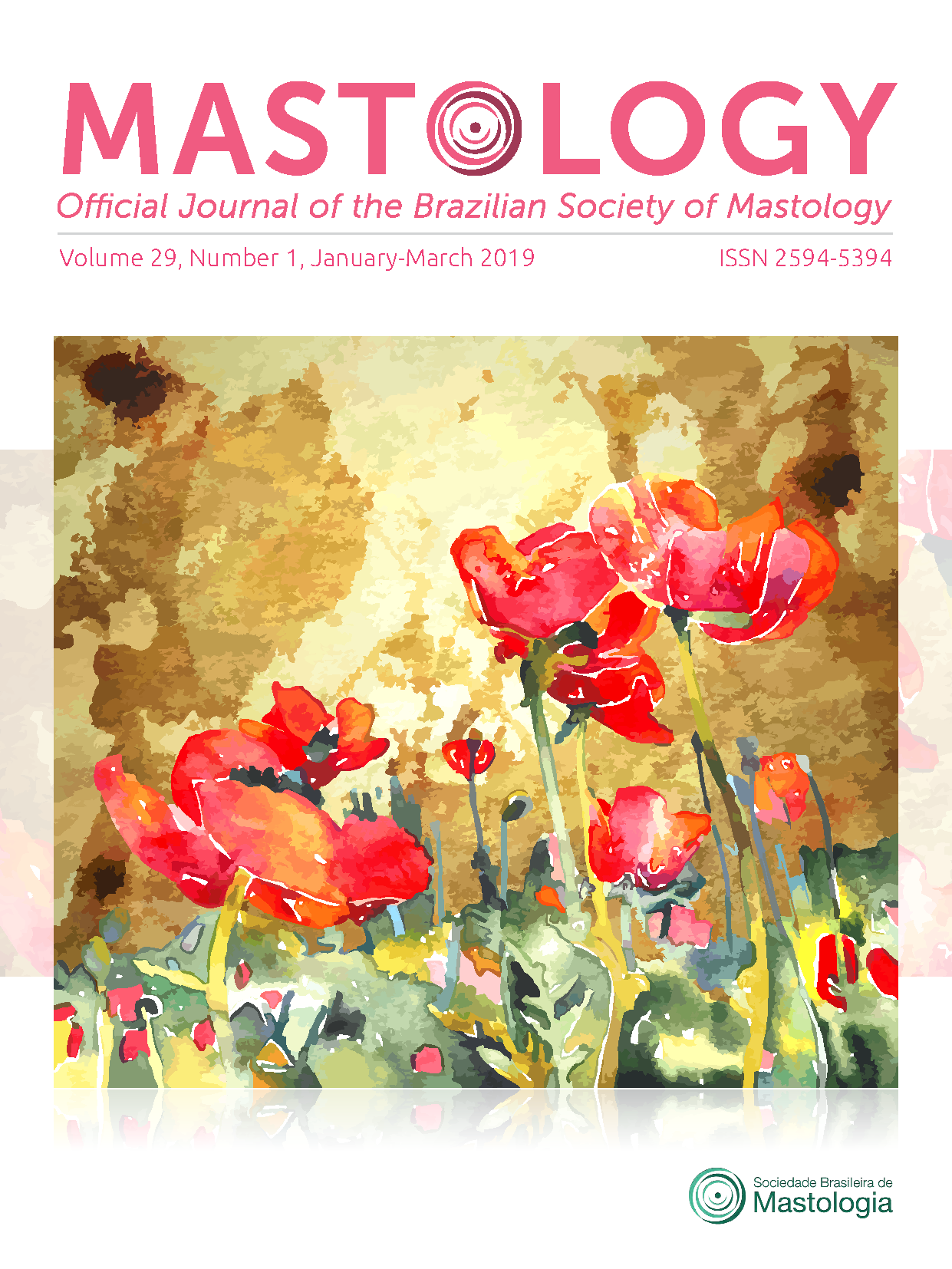EVALUATION OF LOCAL RECURRENCE OF BREAST CONSERVATION SURGERY AT THE CEARÁ INSTITUTE OF CANCER
Keywords:
Carcinoma, ductal, breast, mastectomy, segmental, recurrenceAbstract
Introduction: Breast cancer is the most common malignant tumor in the world, with the exception of cases of non-melanoma skin cancer. In Brazil, more than 56,000 cases were estimated for 2016. The expected mortality rate remains high because of late diagnosis. Nowadays, conservative surgery is the gold standard treatment. Objective: To evaluate the locoregional recurrence of conservative surgery practiced at the Ceará Institute of Cancer, between 2002 and 2012. Method: A cross – sectional study with a descriptive approach using secondary data obtained from the medical records of patients with breast cancer operated at the Ceará Institute of Cancer. Results: The study population consisted of 360 patients. Invasive ductal carcinoma was the most common type (72.8%), followed by ductal carcinoma in situ (16.4%) and invasive lobular carcinoma (4.7%). The other histological types represent 6.4% (cribriform, 0.5%, medullary, 0.6%, micro invasive, 0.3%, mucinous, 1.1%, papillary, 3.1% 8%; and tubular, 0.8%). In the sample, 25 patients had some type of recurrence: 13/360 (3.6%), local or locoregional; and 12/360 (3.3%), distant recurrence. Conclusion: From the data analysis, we can conclude that the conservative surgery practiced at the Ceará Institute of Cancer showed data on recurrence compatible with the international literature.
Downloads
References
Instituto Nacional do Cancer Jose Alencar Gomes da Silva. Estimativa, 2016: Incidencia de Cancer no Brasil. Rio de Janeiro: Inca; 2016.
Halsted WS. The results of radical operations for the cure of carcinoma of the breast. Ann Surg. 1907;46(1):1-19.
Fisher B, Montague E, Redmond C, Deutsch M, Brown GR, Zauber A, et al. Findings from NSABP Protocol No. B-04 - comparison of radical mastectomy with alternative treatments for primary breast cancer. I. Radiation compliance and its relation to treatment outcome. Cancer. 1980;46(1):1-13. https://doi.org/10.1002/1097-0142(19800701)46:1%3C1::AIDCNCR2820460102%3E3.0.CO;2-3
Fisher ER, Anderson S, Redmond C, Fisher B. Ipsilateral breast tumor recurrence and survival following lumpectomy and irradiation: patological findnes from NSABP protocol B-06. Semin Surg Oncol. 1992;8(3):161-6.
Veronesi U, Cascinelli N, Mariani L, Greco M, Saccozzi R, Luini A, et al. Twenty-year follow-up of a randomized study comparing breast-conserving surgery with radical mastectomy for early breast cancer. N Engl J Med. 2002;347(16):1227-32. https://doi.org/10.1056/NEJMoa020989
Harlow SP, Krag DN, Julian TB, Ashikaga T, Weaver DL, Feldman SA, et al. Prerandomization surgical training for the NSABP – 32 trial: a randomized phase III clinical trial to comparari sentinel node ressection to conventional axilary disseccion in clinically node – negative breast cancer. Ann Surg. 2005;241(1):48-54.
Bhatti AB, Khan A, Muzaffar N, Siddiqui N, Syed A, Shah M, et al. Safe negative margin width in breast conservative therapy: results from a population whit a high percentage of negative prognostic factors. World J Surg. 2014;38(11):2863-70. https://doi.org/10.1007/s00268-014-2651-7
Van Laan C, Van der Sangen MJ, Poortmans PM, Nieuwenhuijzen GA, Roukema JA, Roumen RM, et al. Local recurrence following breast conserving treatment in women aged 40 years or younger: trends in risk and impact on prognosis in a population – based cohort of 1143 patients. Eur J Cancer. 2013;49(15):3093-101. https://doi.org/10.1016/j.ejca.2013.05.030
Munck L, Schaapveld M, Siesling S, Wesseling J, Voogd AC, Tjan-Heijnen VCG, et al. Implementation of trastuzumab in conjunction with adjuvante chemotherapy in the treatment of non-metastatic breast cancer in the Netherlands. Breast Cancer Res Treat. 2011;129(1):229-33. https://doi.org/10.1007/s10549-011-1451-0
van Dongen JA1, Voogd AC, Fentiman IS, Legrand C, Sylvester RJ, Tong D, et al. Long-term results of a randomized trial comparing breast-conserving therapy with mastectomy: European Organization for Research and Treatment of Cancer 10801 trial. J Natl Cancer Inst. 2000;92(14):1143-50.
National Comprehensive Cancer Network. Portal [Internet]. Filadelfia: National Comprehensive Cancer Network; 2014. Disponivel em: http://www.nccn.org/
Coates AS, Winer EP, Goldhirsch A, Gelber RD, Gnant M, Piccart-Gebhart M, et al. Tailoring therapies-improving the management of early breast cancer: St Gallen International Expert Consensus on the Primary Therapy of Early Breast Cancer 2015. Ann Oncol. 2015;26(8):1533-46. https://doi.org/10.1093/annonc/mdv221
Greenberg CC, Habel LA, Hughes ME, Nekhlyudov L, Achacoso N, Acton L, et al. Characterization and treatment of local recurrence following breast conservation for ductal carcinoma in situ. Ann Surg Oncol. 2014; 21(12):3766-73. https://doi.org/10.1245/s10434-014-3802-7
Downloads
Published
How to Cite
Issue
Section
License
Copyright (c) 2019 Giovanni de Freitas Magalhães, Francisco Pimentel Cavalcante, Marcos Venício Alves Lima, Rafael Bustamante de Castro

This work is licensed under a Creative Commons Attribution 4.0 International License.







